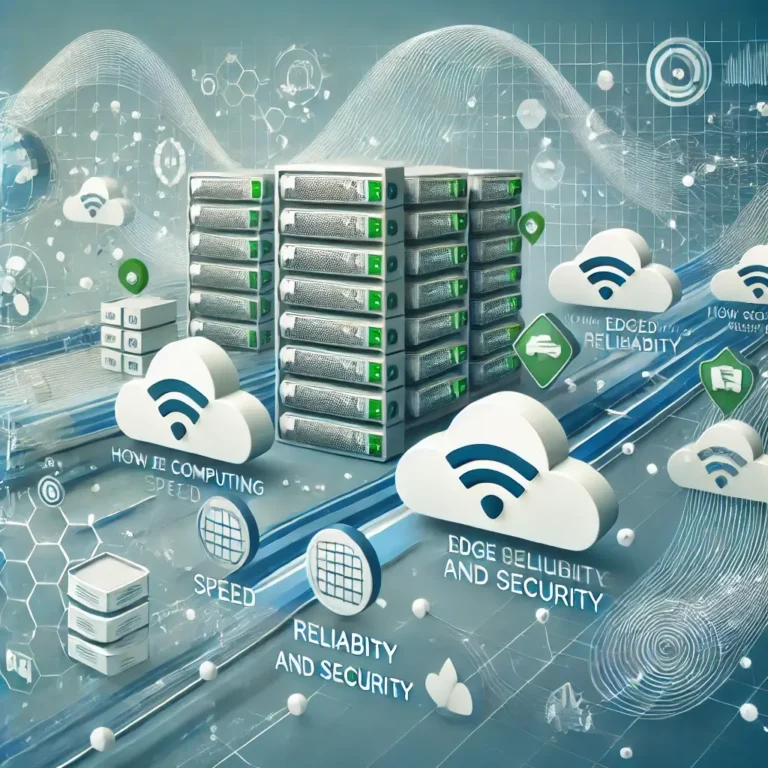
In web development, one of the most critical factors influencing a user’s experience is the speed at which a website loads. In today’s fast-paced digital world, users expect websites to load almost instantly. Any delay, even as brief as a few seconds, can lead to frustration and lost engagement opportunities. This is where edge computing comes into play. Edge Computing in Web Development is a distributed computing paradigm that brings computation and data storage closer to where it’s needed, rather than relying on a centralized data center. Websites can deliver content more quickly and efficiently by strategically placing servers at the network’s edge, closer to the end user. The result? Faster load times, reduced latency, and a smoother, more responsive user experience.
What is Edge Computing in Web Development?
Edge computing shifts processing power closer to the data source—such as the user’s device—by utilizing local servers or edge servers rather than distant data centers. This method reduces the distance that data must travel, decreasing latency and improving user load times.
How Edge Computing Enhances User Experience in Web Development
1. Reduced Latency
One of the primary benefits of edge computing is the significant reduction in latency. Latency refers to the time data travels from the server to the user’s device and back. In traditional web hosting, where servers may be located far from the user, this round-trip can introduce delays, particularly for users in remote locations.
By processing and delivering data closer to the user, edge computing minimizes the distance data needs to travel, thereby reducing latency. The result is faster load times and a more seamless browsing experience, keeping users engaged and satisfied.
2. Improved Reliability
Reliability is another critical aspect of user experience. In a traditional centralized server setup, the entire website can become inaccessible if the primary server goes down. Edge computing enhances reliability by distributing computing resources across multiple edge servers. If one server experiences issues, other edge servers can continue to serve content, ensuring that the website remains functional even during partial outages.
This distributed nature of edge computing enhances the website’s overall availability and helps balance the load during high-traffic periods, preventing server overloads and potential downtimes.
3. Enhanced Security
Security is paramount in web development, especially when dealing with sensitive user data. Edge computing can improve security by reducing the risk of data breaches and cyberattacks. By storing and processing data closer to the end user, edge computing minimizes data exposure during transit. This localized processing reduces the potential points of vulnerability, providing an added layer of protection for both users and website owners.
Moreover, with edge computing, it’s easier to implement security measures such as encryption, firewalls, and intrusion detection systems at multiple points in the network, enhancing the overall security posture.
The Impact of Edge Computing in Web Development on Business Success
Moreover, incorporating edge computing into your web development strategy can bring several business benefits. Faster load times and enhanced user experiences often translate into increased user engagement, higher conversion rates, and better customer satisfaction. Reliable and secure websites build trust with users, leading to long-term loyalty and repeat visits.
As users become more accustomed to fast, reliable, and secure online experiences, businesses that leverage edge computing will stand out from the competition. By delivering superior performance, these businesses can capture more opportunities, reduce bounce rates, and drive tremendous business success.
Pegotec’s Role in Integrating Edge Computing in Web Development
Furthermore, we understand the importance of optimizing web performance to enhance user experience. Our team of skilled developers is experienced in integrating edge computing technologies into web development projects. We work closely with our clients to identify the best edge computing strategies tailored to their specific needs, ensuring their websites perform efficiently.
Whether you’re looking to reduce latency, improve reliability, or enhance security, Pegotec has the expertise to help you leverage edge computing to its fullest potential. We ensure that your website meets and exceeds user expectations, providing a competitive edge in today’s digital landscape.
Conclusion: The Future of Web Development with Edge Computing
In conclusion, edge computing is no longer a futuristic concept—it’s a reality transforming web development and enhancing user experiences. By bringing data processing closer to the user, edge computing reduces latency, improves reliability, and enhances security, contributing to a better browsing experience.
Consider incorporating edge computing into your development strategy to take your website to the next level. At Pegotec, we’re here to help you navigate this technology and ensure that your website delivers the fast, reliable, and secure experience that today’s users demand. Let’s work together to create a website that meets and exceeds user expectations, driving engagement and business success. Contact Pegotec and discuss Enhancing User Experience in Web Development with Edge Computing.